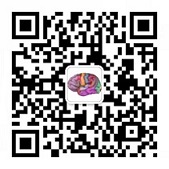1981年国际抗癫痫联盟(ILAE)癫痫发作分类
1、部分性(局灶性,局部)发作(partial (focal, local) seizures)
- 简单部分性癫痫发作(意识不受损)(Simple partial seizures (consciousness not impaired))
- 具有运动症状(With motor signs)
- 局限运动(不伴随扩散)(focal motor (without march))
- 局限运动(伴随扩散)(杰克逊发作)(focal motor (without march))(jacksonian)
- 偏转性(versive)
- 姿势性(postural)
- 发音性(发音和语言中止)phonatory (vocalization and arrest of speech)
- 有躯体感觉或特殊感觉症状(简单幻觉,如刺痛、闪光、嗡嗡声)(With somatosensory or special-sensory symptoms (simple hallucinations, e.g., tingling, light flashes, buzzing))
- 躯体感觉(somatosensory)
- 视觉(visual)
- 听觉(auditory)
- 嗅觉(olfactory)
- 味觉(gustatory)
- 眩晕(vertiginous)
- 有自主神经症状或体征(包括上腹部感觉、苍白、出汗、潮红、竖毛和瞳孔扩大)(With autonomic symptoms or signs (including epigastric sensation, pallor, sweating, flushing, piloerection and pupillary dilatation))
- 伴有精神症状(大脑高级功能紊乱)。这些症状很少在没有意识障碍的情况下出现,通常表现为复杂性的部分性发作(With psychic symptoms (disturbance of higher cerebral function). These symptoms rarely occur without impairment of consciousness and are much more commonly experienced as complex partial seizures)
- 具有运动症状(With motor signs)
- 复杂部分性发作(有意识受损,有时可以简单症状先起始)(Complex partial seizures)(with impairment of consciousness; may sometimes begin with simple symptomatology)
- 简单部分发作起始随后伴意识受损(Simple partial onset followed by impairment of consciousness)
- 具有简单部分特征随后出现意识受损(With simple partial features followed by impaired consciousness)
- 伴有自动症(With automatisms)
- 一开始就意识受损(With impairment of consciousness at onset)
- 只有意识受损(With impairment of consciousness only)
- 伴有自动症(With automatisms)
- 简单部分发作起始随后伴意识受损(Simple partial onset followed by impairment of consciousness)
- 部分性发作演变为继发全面性发作(这些可能是全面性强直-阵挛发作、强直发作或阵挛发作)(Partial seizures evolving to secondarily generalized seiures (This may be generalized tonic-clonic, tonic, or clonic))
- 简单部分性发作演变为全面性发作(Simple partial seizures evolving to generalized seizures)
- 复杂部分性发作演变为全面性发作(Complex partial seizures evolving to generalized seizures)
- 简单部分性发作演变为复杂部分性发作再演变为全面性发作(Simple partial seizures evolving to complex partial seizures evolving to generalized seizures)
2、全面性发作(惊厥性或非惊厥性)(generalized seizures (convulse or nonconvulsive))
- 失神(absences)
- 只有意识受损(impairment of consciousness only)
- 有轻微阵挛成分(with mild clonic components)
- 有失张力成分(With atonic components)
- 有强直成分(With tonic components)
- 有自动症(with automatisms)
- 有自主神经症状成分(with autonomic components)
- B-F可单独或组合出现(B through F may be used alone or in combination)
- 不典型失神(Atypical absence)
- 张力变化更明显(Changes in tone that are more pronounced than in absences)
- 非突然的发作和/或停止(Onset and/or cessation that is not abrupt)
- 肌阵挛发作肌阵挛抽动(单发或多发)(Myoclonic seizures Myoclonic jerks (single or multiple))
- 阵挛发作(Clonic seizures)
- 强直发作(Tonic seizures)
- 强直阵挛性发作(Tonic-clonic seizures)
- 失张力发作(站立不能)(以上类型可以组合出现,比如肌阵挛发作和失张力发作,肌阵挛发作和强直发作)Atonic seizures (Astatic) (combinations of the above may occur, e.g., Myoclonic seizures and Atonic seizures, Myoclonic seizures and Tonic seizures))
3、未能分类癫痫发作(包括因数据不充分或不完整而无法分类的所有发作类型,以及迄今为止尚无法分到所描述的某一类别。包括一些新生儿发作,例如有节奏性的眼球运动、咀嚼和游泳运动)(Unclassified epileptic seizures)(Includes all seizures that cannot be classified because of inadequate or incomplete data and some that defy classification in hitherto described categories. This includes some neonatal seizures, e.g., rhythmic eye movements, chewing, and swimming movements)
参考文献:

 简体中文
简体中文  English
English 